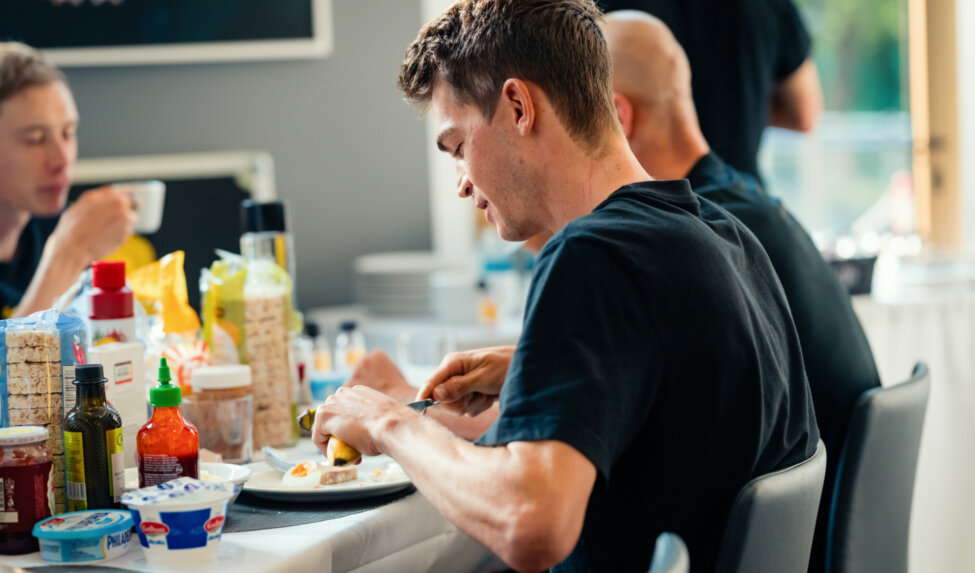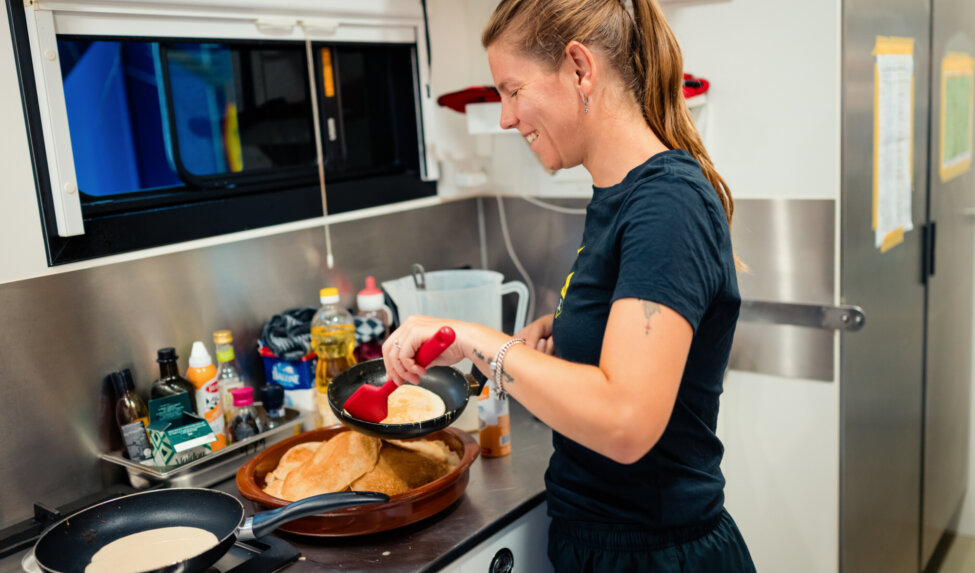This is how to survive hot days on the bike
There’s nothing quite like a sun-soaked day in the saddle. Your bike seems to call your name louder when the sky is blue and the temperature creeps higher. But while summer cycling offers stunning rides and post-ride tan lines, it also brings a serious challenge: heat. Here’s how to conquer the hot summer days like a pro with some tips from The Athlete’s FoodCoach.
Why training in the heat takes a different approach
1. Your internal cooling system
Your body’s primary way to cool itself down during exercise is by sweating. This helps regulate core temperature, but only if you’re well-hydrated. Without sufficient fluid, sweat production drops, your core temperature rises, and fatigue sets in much faster. In extreme cases, it can even lead to heat exhaustion or heatstroke. Even when it’s dry, you’re still sweating. It just evaporates faster, which can trick you into thinking you’re not losing much fluid. Don’t be fooled.
2. Fluid loss affects performance
Dehydration of just 2% of your body weight can impair performance significantly. Your heart rate increases, blood flow to muscles drops, and perceived exertion spikes. Simply put, you’ll feel like you’re working twice as hard for half the results. On hot days, sweat rates can exceed 1 liter per hour, and this fluid loss needs constant replenishment to prevent overheating and performance drops.
3. Keep fueling up with carbs
During exercise, especially in the heat, your body relies more heavily on glycogen and blood glucose as fuel. In high temperatures, your carbohydrate oxidation rate increases, meaning your body burns through its carb stores faster to meet energy demands. However, in hot weather, your appetite naturally takes a hit. That’s because blood is redirected away from the digestive system to help cool the body, and key appetite-regulating hormones are disrupted. As a result, you may not feel hungry even when your body urgently needs fuel. This makes structured, proactive fueling essential. Ignoring fueling in the heat can quickly lead to under-fueling, which increases the risk of early fatigue, poor performance, and delayed recovery.
Practical tips to survive your hot summer rides
1. Start ahead of the ride
Begin every ride in a hydrated state. A quick way to check? Look at your urine color before getting on the bike. A pale yellow indicates you're hydrated enough. If it’s darker, drink more water before starting your ride. More tips? Read here!
2. Drink early and often
By the time you feel thirsty, you're already behind. Try to sip 200 ml (about 7 oz) every 15–20 minutes, aiming for around one standard bidon (500–750 ml) per hour. On especially hot or humid days, consider carrying an extra bottle for longer rides.
3. Balance carbs and fluids
Don’t wait until you feel hungry to eat but plan your on-bike intake ahead. If you struggle with decreased appetite, use easy-to-digest options and schedule intake to stay ahead of energy dips. Use liquid carbs or energy gels/chews that are easier to tolerate when solid food feels unappealing. Amacx Drink Mixes are designed to fuel and hydrate in a balanced way. If you decide to stack liquid carbs, make sure to add extra water on the side for optimal absorption.
4. Cool down like a pro
Pour water on your neck or arms at stops to help lower surface temperature. Freeze a bottle overnight and carry it as your second bottle to keep cool on longer rides. Another game-changer are the Amacx Ice Gels. These are both cooling and packed with carbs!
5. Personalise your hydration strategy
Want some guidance to put these tips into practice? Use the FoodCoach app and the ‘Hydration before training’ or ‘Hydration during training’ medal to master pre-bike and on-bike hydration step-by-step. Start with the basics, build consistency with personalised strategies, and optimise for peak performance!
Riding in the heat doesn’t have to be a struggle. With the right hydration strategy you can not only survive but thrive on hot days. So, gear up, mix your bottles, and let the sun power your best rides yet.







